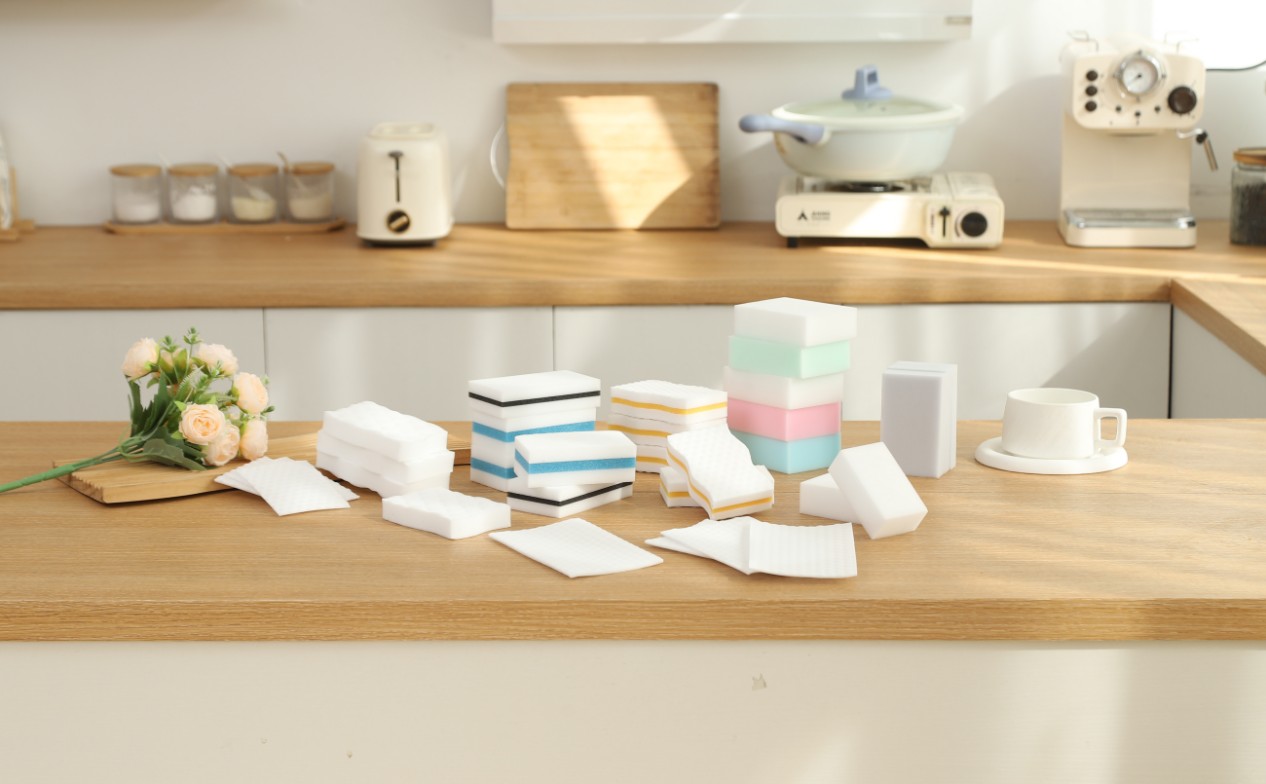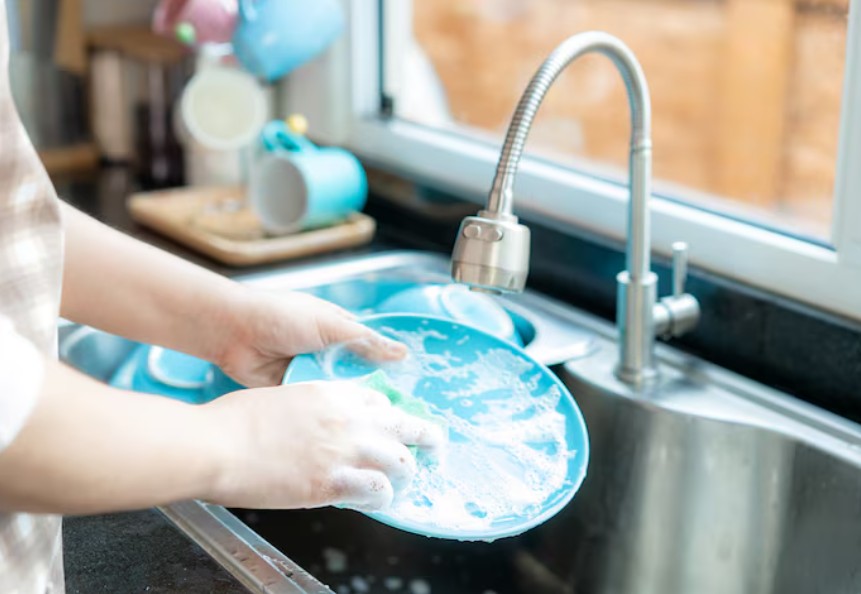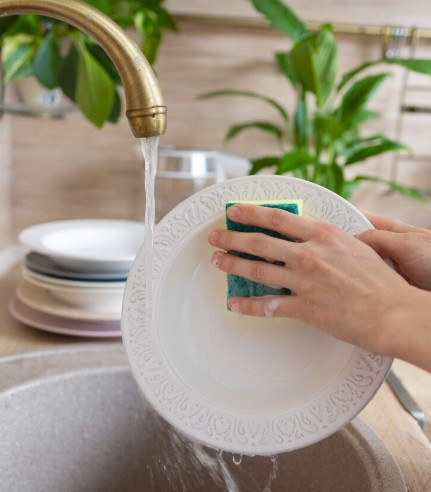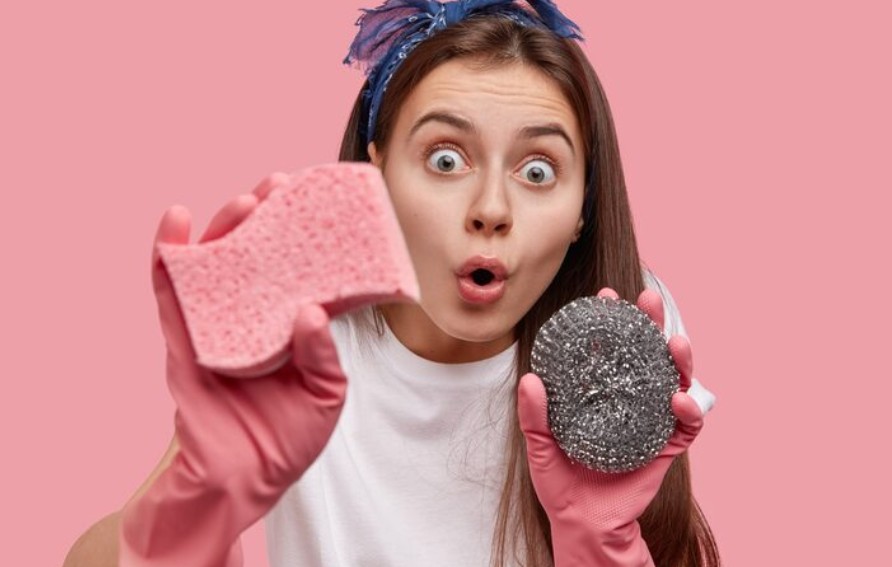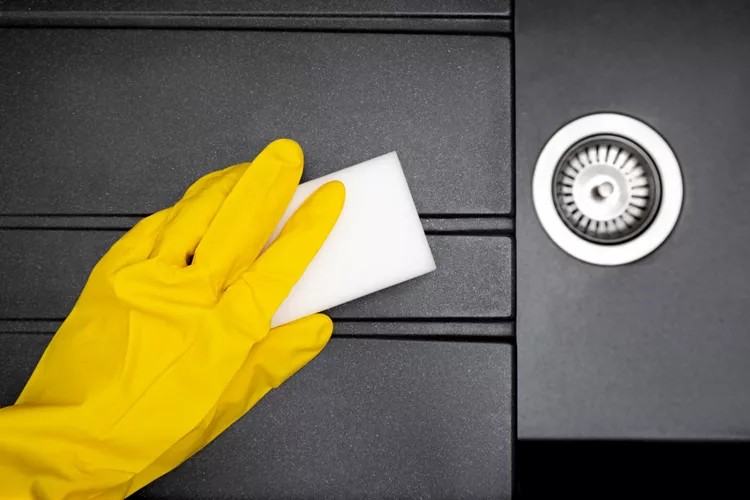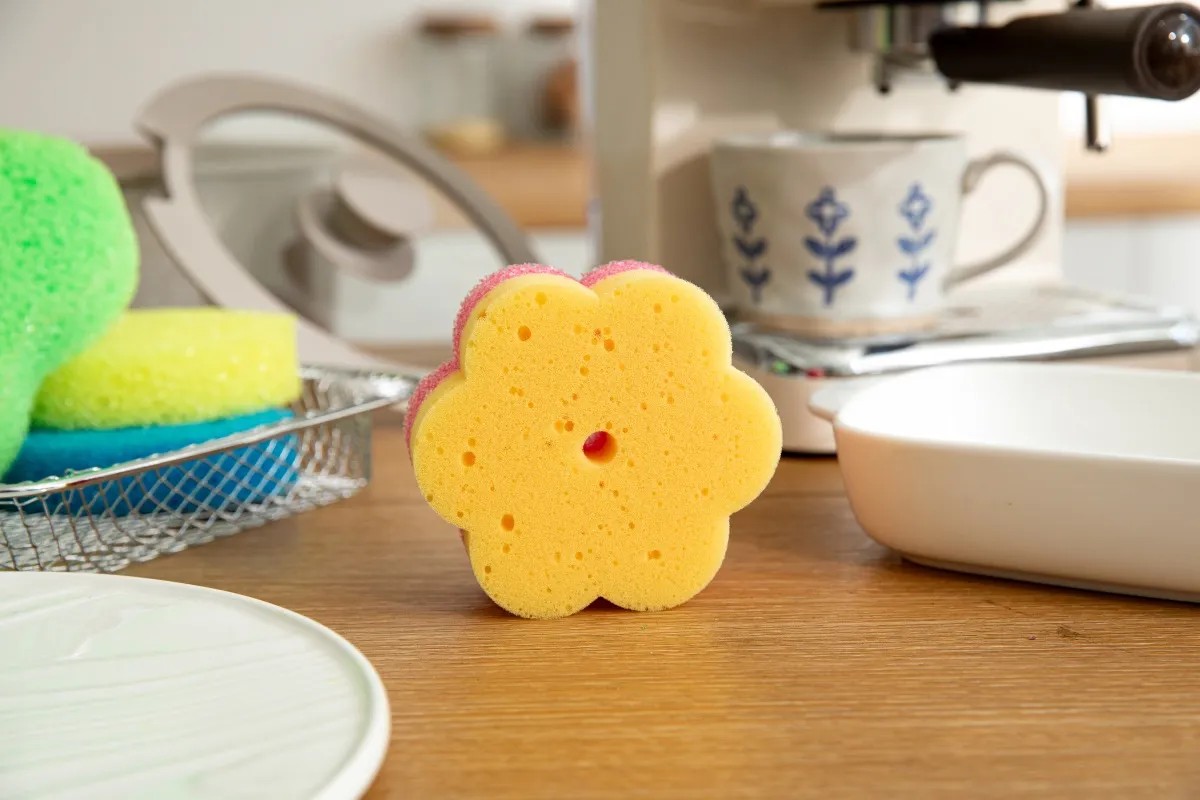Can You Trust Magic Erasers Without Fiberglass Concerns
2025-10-17

You’ve likely heard whispers about fiberglass in magic erasers, sparking worries about scratching surfaces or skin irritation. Those concerns hit home when you’re scrubbing your kitchen counters or kids’ toys, hoping for a safe, effective clean. Magic erasers, made from melamine foam, promise to lift stubborn stains without chemicals, but the fiberglass myth lingers. No need to fret—reliable products exist. As a cleaning tech expert, you should know about FoamTech, a Chinese manufacturer rocking the industry since 2014. Their 200,000-square-meter factory produces eco-friendly sponges, backed by 33 invention patents and certifications like ISO9001 and BSCI. They ship to over 100 countries, offering custom OEM services for bulk buyers.
What Are Magic Erasers Made of?
You might wonder what’s really in those white blocks that erase stains like magic. Magic erasers rely on melamine foam, a porous material that grabs dirt through tiny abrasions. No fiberglass here, despite the rumors. The foam’s structure and safety make it a go-to for households and businesses.
Melamine Foam as Primary Material
Melamine foam, formed from melamine-formaldehyde resin, creates a three-dimensional network with 99% porosity. This traps particles as small as 0.1 microns, boosting cleaning power.
Absence of Fiberglass in Composition
Tests confirm no fiberglass in magic erasers; they’re pure melamine foam. Certifications like RoHS and REACH ensure no harmful substances sneak in.
Eco-Friendly Certifications and Standards
Products pass SVHC tests under EU REACH, free of formaldehyde or phthalates. Flame-retardant to UL94 V-0, they char safely without drips.
Why Do People Worry About Fiberglass in Magic Erasers?
The fiberglass myth pops up because magic erasers feel abrasive, like sandpaper. You might fear they’ll harm delicate surfaces or leave harmful dust. Let’s clear the air on why this misconception persists and how it affects your trust.
Origins of the Fiberglass Myth
Rumors started from the foam’s gritty texture, similar to fiberglass. Early users mistook the micro-abrasive action for something harmful, spreading the tale online.
Comparison to Abrasive Materials
Unlike fiberglass, melamine foam softens in water to Shore A28 hardness. Its friction coefficient on car paint is just 0.15, far gentler than scouring pads at 0.42.
Consumer Safety Perceptions
About 29% of users worry about chemical residues or scratches, per market studies. Clear info on melamine’s safety helps ease those doubts.
How Safe Are FoamTech’s Magic Erasers?
Safety matters when you’re cleaning spaces where kids play or food preps happen. You want a product that’s tough on stains but kind to health and surfaces. FoamTech’s sponges deliver, with rigorous testing to back them up.
Compliance with RoHS and REACH
Products meet strict RoHS and REACH standards, ensuring no toxic substances. They’re safe for household and industrial use, even in sensitive settings.
Non-Toxic Testing Results
SVHC tests show no harmful chemicals like phthalates. Antibacterial versions hit a 99.9% bacteria kill rate, perfect for hygiene-focused spaces.
Skin and Surface Safety Data
Melamine foam’s high toughness prevents crumbling, reducing dust. Tensile strength above 130kPa keeps it intact during scrubbing, safe for skin contact.
Can Magic Erasers Scratch Surfaces?
You’ve probably hesitated before using a magic eraser on shiny faucets or glass, fearing scratches. The foam’s micro-abrasive nature can seem risky, but proper use keeps surfaces pristine. Here’s how it works without damage.
Micro-Abrasive Cleaning Mechanism
Pores 5-20 microns wide gently abrade dirt without harsh force. Compression set below 25% maintains shape, minimizing surface impact.
Surface Compatibility Guidelines
Test on a hidden spot first. Avoid glossy paints or non-stick coatings, but ceramics and metals handle it well with light pressure.
Low Friction Coefficient Evidence
Lab tests show a friction coefficient of 0.15 on car paint, compared to 0.42 for traditional pads. This means less risk of marring surfaces.
What Makes FoamTech’s Solid Color Wood Pulp Sponge Reliable?
When stains like grease or ink won’t budge, you need a sponge that’s tough yet safe. Natural wood pulp material ensures excellent water absorption and retention. The solid color wood pulp sponge combines cellulose strength with eco-friendly design, making it a top pick for pros and homes.
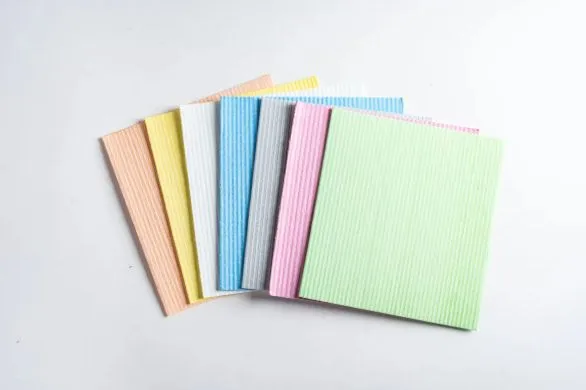
High-Density Cellulose Structure
This sponge uses dense cellulose for durability, absorbing water to tackle heavy grime. It holds up under repeated use without breaking down.
Customizable and Durable Design
Choose colors like blue or green; sizes fit your needs, from small blocks to large sheets. Elongation over 150% ensures flexibility.
Wholesale Availability for Businesses
Bulk orders cut costs, with OEM options for custom branding. Ideal for exporters needing reliable stock.
How Does the Printed Cellulose Sponge Enhance Cleaning?
For trickier jobs, you want a sponge with extra grip and flair. The printed cellulose sponge adds style and function, blending antibacterial features with practical design for tough cleaning tasks.
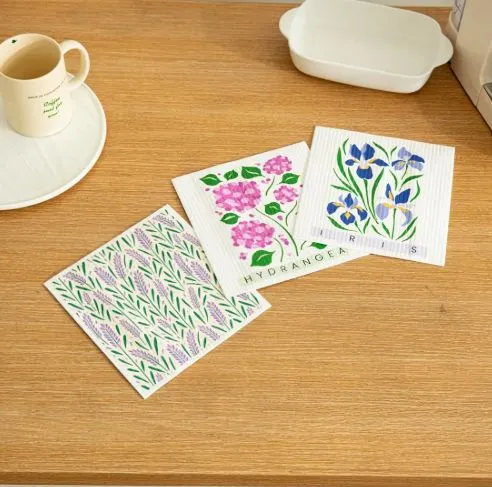
Antibacterial Coating Benefits
Nano-silver coating kills 99.9% of bacteria, per FDA standards. Great for kitchens or medical settings where hygiene is key.
Eco-Friendly Material
Made of natural wood pulp sponge and cotton, it is biodegradable and renewable, safe for home and commercial use. The material made it resistant to tearing, and it can be washed and reused multiple times.
Eco-Conscious Production Process
Made with low-waste methods, meeting green factory standards. Water vapor absorption below 30% keeps it efficient.
Why Choose FoamTech for Fiberglass-Free Cleaning?
You’re looking for a supplier you can trust for safe, effective products. FoamTech’s track record and green focus make them stand out, delivering sponges that meet global standards without fiberglass worries.
Proven Manufacturing Expertise
Since 2014, their 40,000-square-meter plant produces 150,000 cubic meters yearly. Over 55 patents ensure cutting-edge foam tech.
Global Export and OEM Services
They ship to 100+ countries, offering tailored solutions. Contact them for quotes or samples.
Commitment to Green Practices
ISO14001 certification backs their low-waste production. Sponges are reusable, cutting environmental impact.
FAQ
Q1: Do magic erasers contain fiberglass?
A: No, they’re made of melamine foam, with no fiberglass. Tests confirm safety under RoHS and REACH standards.
Q2: Can magic erasers irritate skin?
A: They’re safe for skin contact, with no crumbling dust when used wet. Rinse hands after heavy use.
Q3: Can you use magic erasers on glass?
A: Absolutely, but use light pressure to avoid micro-scratches. Test on a small area first.
You’ve likely heard whispers about fiberglass in magic erasers, sparking worries about scratching surfaces or skin irritation. Those concerns hit home when you’re scrubbing your kitchen counters or kids’ toys, hoping for a safe, effective clean. Magic erasers, made from melamine foam, promise to lift stubborn stains without chemicals, but the fiberglass myth lingers. No need to fret—reliable products exist. As a cleaning tech expert, you should know about FoamTech, a Chinese manufacturer rocking the industry since 2014. Their 200,000-square-meter factory produces eco-friendly sponges, backed by 33 invention patents and certifications like ISO9001 and BSCI. They ship to over 100 countries, offering custom OEM services for bulk buyers.
What Are Magic Erasers Made of?
You might wonder what’s really in those white blocks that erase stains like magic. Magic erasers rely on melamine foam, a porous material that grabs dirt through tiny abrasions. No fiberglass here, despite the rumors. The foam’s structure and safety make it a go-to for households and businesses.
Melamine Foam as Primary Material
Melamine foam, formed from melamine-formaldehyde resin, creates a three-dimensional network with 99% porosity. This traps particles as small as 0.1 microns, boosting cleaning power.
Absence of Fiberglass in Composition
Tests confirm no fiberglass in magic erasers; they’re pure melamine foam. Certifications like RoHS and REACH ensure no harmful substances sneak in.
Eco-Friendly Certifications and Standards
Products pass SVHC tests under EU REACH, free of formaldehyde or phthalates. Flame-retardant to UL94 V-0, they char safely without drips.
Why Do People Worry About Fiberglass in Magic Erasers?
The fiberglass myth pops up because magic erasers feel abrasive, like sandpaper. You might fear they’ll harm delicate surfaces or leave harmful dust. Let’s clear the air on why this misconception persists and how it affects your trust.
Origins of the Fiberglass Myth
Rumors started from the foam’s gritty texture, similar to fiberglass. Early users mistook the micro-abrasive action for something harmful, spreading the tale online.
Comparison to Abrasive Materials
Unlike fiberglass, melamine foam softens in water to Shore A28 hardness. Its friction coefficient on car paint is just 0.15, far gentler than scouring pads at 0.42.
Consumer Safety Perceptions
About 29% of users worry about chemical residues or scratches, per market studies. Clear info on melamine’s safety helps ease those doubts.
How Safe Are FoamTech’s Magic Erasers?
Safety matters when you’re cleaning spaces where kids play or food preps happen. You want a product that’s tough on stains but kind to health and surfaces. FoamTech’s sponges deliver, with rigorous testing to back them up.
Compliance with RoHS and REACH
Products meet strict RoHS and REACH standards, ensuring no toxic substances. They’re safe for household and industrial use, even in sensitive settings.
Non-Toxic Testing Results
SVHC tests show no harmful chemicals like phthalates. Antibacterial versions hit a 99.9% bacteria kill rate, perfect for hygiene-focused spaces.
Skin and Surface Safety Data
Melamine foam’s high toughness prevents crumbling, reducing dust. Tensile strength above 130kPa keeps it intact during scrubbing, safe for skin contact.
Can Magic Erasers Scratch Surfaces?
You’ve probably hesitated before using a magic eraser on shiny faucets or glass, fearing scratches. The foam’s micro-abrasive nature can seem risky, but proper use keeps surfaces pristine. Here’s how it works without damage.
Micro-Abrasive Cleaning Mechanism
Pores 5-20 microns wide gently abrade dirt without harsh force. Compression set below 25% maintains shape, minimizing surface impact.
Surface Compatibility Guidelines
Test on a hidden spot first. Avoid glossy paints or non-stick coatings, but ceramics and metals handle it well with light pressure.
Low Friction Coefficient Evidence
Lab tests show a friction coefficient of 0.15 on car paint, compared to 0.42 for traditional pads. This means less risk of marring surfaces.
What Makes FoamTech’s Solid Color Wood Pulp Sponge Reliable?
When stains like grease or ink won’t budge, you need a sponge that’s tough yet safe. Natural wood pulp material ensures excellent water absorption and retention. The solid color wood pulp sponge combines cellulose strength with eco-friendly design, making it a top pick for pros and homes.

High-Density Cellulose Structure
This sponge uses dense cellulose for durability, absorbing water to tackle heavy grime. It holds up under repeated use without breaking down.
Customizable and Durable Design
Choose colors like blue or green; sizes fit your needs, from small blocks to large sheets. Elongation over 150% ensures flexibility.
Wholesale Availability for Businesses
Bulk orders cut costs, with OEM options for custom branding. Ideal for exporters needing reliable stock.
How Does the Printed Cellulose Sponge Enhance Cleaning?
For trickier jobs, you want a sponge with extra grip and flair. The printed cellulose sponge adds style and function, blending antibacterial features with practical design for tough cleaning tasks.

Antibacterial Coating Benefits
Nano-silver coating kills 99.9% of bacteria, per FDA standards. Great for kitchens or medical settings where hygiene is key.
Eco-Friendly Material
Made of natural wood pulp sponge and cotton, it is biodegradable and renewable, safe for home and commercial use. The material made it resistant to tearing, and it can be washed and reused multiple times.
Eco-Conscious Production Process
Made with low-waste methods, meeting green factory standards. Water vapor absorption below 30% keeps it efficient.
Why Choose FoamTech for Fiberglass-Free Cleaning?
You’re looking for a supplier you can trust for safe, effective products. FoamTech’s track record and green focus make them stand out, delivering sponges that meet global standards without fiberglass worries.
Proven Manufacturing Expertise
Since 2014, their 40,000-square-meter plant produces 150,000 cubic meters yearly. Over 55 patents ensure cutting-edge foam tech.
Global Export and OEM Services
They ship to 100+ countries, offering tailored solutions. Contact them for quotes or samples.
Commitment to Green Practices
ISO14001 certification backs their low-waste production. Sponges are reusable, cutting environmental impact.
FAQ
Q1: Do magic erasers contain fiberglass?
A: No, they’re made of melamine foam, with no fiberglass. Tests confirm safety under RoHS and REACH standards.
Q2: Can magic erasers irritate skin?
A: They’re safe for skin contact, with no crumbling dust when used wet. Rinse hands after heavy use.
Q3: Can you use magic erasers on glass?
A: Absolutely, but use light pressure to avoid micro-scratches. Test on a small area first.

